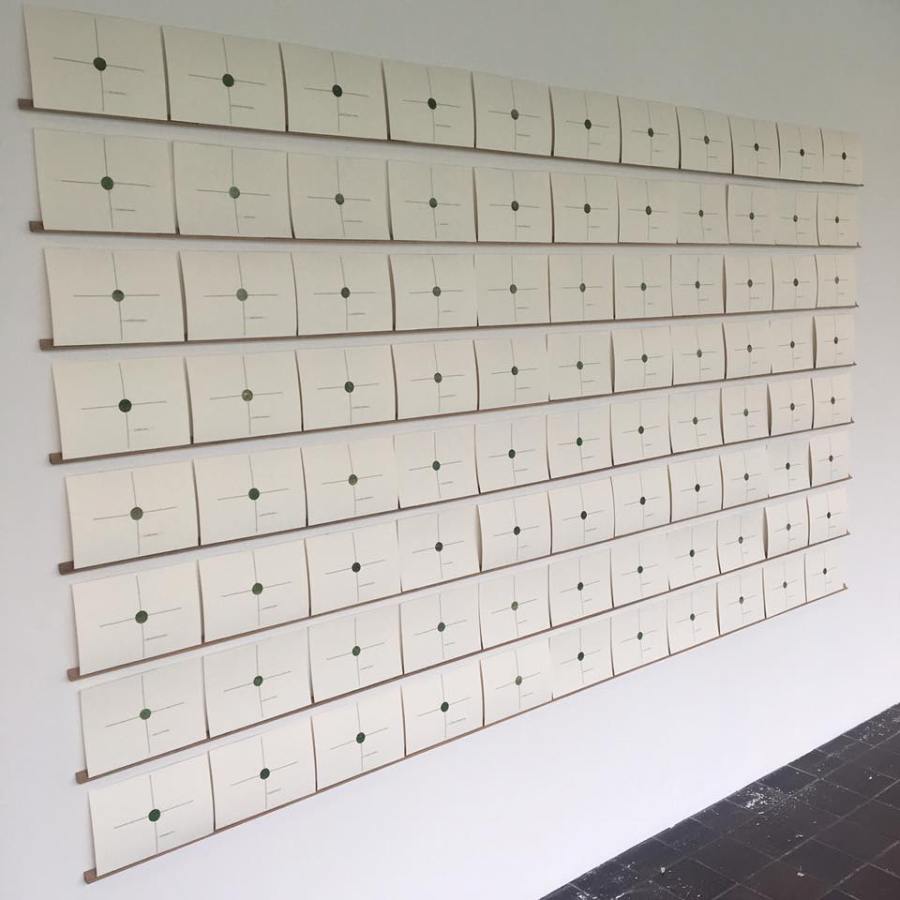The project ‘CARE: from periphery to centre’, combining commissioned, site specific art and material from the College Archive, was exhibited at Homerton College of the University of Cambridge between 15 and 28 October 2018. Part of the project remains permanently installed in the college, part is looked after in the college archive, and part is in the Moleskine Foundation Art Collection here .
It was discussed in an interview from 2019 with Ayla Van Der Boor in the context of the University of Utrecht’s managed Care Ethics Consortium (available here). Part of this is published in a limited edition catalogue CARE: from periphery to centre. Elena Cologni, with texts by historian of science Melanie Keene, educationalist Peter Cunningham, curator Gabi Scardi and care ethicist Virginia Held (here is the digital version of the catalogue)
The project highlighted Maud Cloudesley Brereton (formerly Maud Horobin, lecturer and Acting Principal, 1903), and Leah Manning (student 1906-08) as figures of international importance representing Homerton’s historic concern with and contributions to health, well-being, and education. A display of relevant items gave a snapshot of early 20th-century life in the College, while focusing on practices of care in society and in students’ learning, through subjects such as domestic studies, medicine, health, and physical education. These themes underpin my sculptural installation designed in response to the 1914 Ibberson Gymnasium (now the Combination Room), and echoed in the Queen’s Wing glass corridor and lawn.
During the exhibition the public was be able to attend the following accompanying events as part of Homerton 250 and the Cambridge Festival of Ideas:
Monday, 15 October: Tour and public opening of the installation, with artist Elena Cologni.
Wednesday, 17 October, 5.30-7.30PM: Workshop with artist Elena Cologni – CARE: Connecting Experiences
Friday, 19 October: Talk and workshop at Gibberd Art Gallery, Harlow
Sunday, 21 October, 2.00-5.30PM: Symposium – CARE: Historical and Contemporary Perspectives
This event featured two panels on CARE in the early 20th century and CARE today. The first welcomed Peter Cunningham (Homerton College), Francesca Moore (Homerotn College), and Jessica Meyer (Leeds), and was chaired by Melanie Keene (Homerton College). The second was chaired by Philip Stephenson (Homerton College), and featured Elena Cologni, Gabi Scardi (Università Cattolica di Milano), and Peggy Watson (Homerton College).
Saturday, 27 October: Homerton 250 Festival, including a tour of the installation with artist Elena Cologni, and an opportunity to meet Archivist Svetlana Paterson.



RELATIONS OF CARE, ELENA COLOGNI (2018, PAIR OF MOBILE SCULPTURES, STEEL RODS, JUTE ROPES, 2.5 X 2.5 X 2 METRES EACH). Photographs courtesy of ARTUK.org. These are now on display on a permanent basis.

Care Proximities, Elena Cologni, installation view in front of the Ibberson Building, Homerton College, University of Cambridge (2018, installation including two sculptures and drawing on college lawn: wood + lawn marking paint, 20x100x0.5 meters)

Care Support, Elena Cologni, installation view in the Queen’s Wing veranda housing the new gym, Homerton College, University of Cambridge (2018/19, installation including three sculptures and frames: steel, 2.40×0.5×20 meters)
Documentation of the project, and presentation at Gibberd Gallery, Harlow (2018).
Mother’s Tools, (2018, compositions of 4: wood, steel, custom-made fabric labels, printing tools from the artists’ mother’s embroidery kit, 20 x 20 x 4 cm each). The labels read: CARE AS SUPPORT, RESPONSIVENESS TO NEED, PERSONS ARE RELATIONAL, UBUNTU.

Care Notes (motherhood), 2018, detail, graphite prints, pencil, laser print on paper on Moleskine Japanese album, with inserts of fabric. designs from the Architectural Review magazine, June 1939, 21cmX 120 cm).

Care Notes (architecture), 2018, detail, graphite prints, pencil, laser print on paper on Moleskine Japanese album, with inserts of fabric. designs from the Architectural Review magazine, June 1939, 21cmX 120 cm). Courtesy of Moleskin Art Collection.

Care Is Relational, and Care Instructions, (2018, 2 from series of woven labels, the first of which is inspired by Virginia Held’s writings, and the latter by Maud Brereton’s revolutionary position at the time, that domestic labour should be paid)
The above were produced in the project CARE: from periphery to centre, 2018
in collaboration with:
Virginia Held (philosopher, New York City University)
Gabi Scardi (Curator and Author, Milan Italy)
THE 250 ARCHIVE WORKING GROUP
Peter Cunningham (educationalist and social historian) Melanie Keene (historian of science) Svetlana Paterson (archivist)
ACKNOWLEDGMENTS
University College London Library; Cambridge University Library; The Harlow Art Trust: Gibberd Gallery, Harlow. The project is part of Cambridge Festival of Ideas, was commissioned by Homerton College, and is kindly supported by the Moleskine Foundation.























































